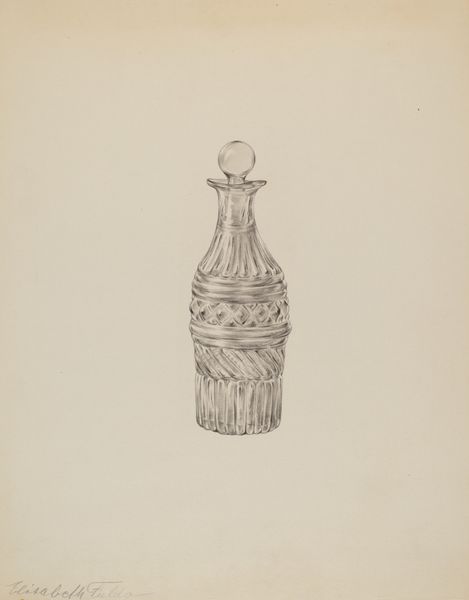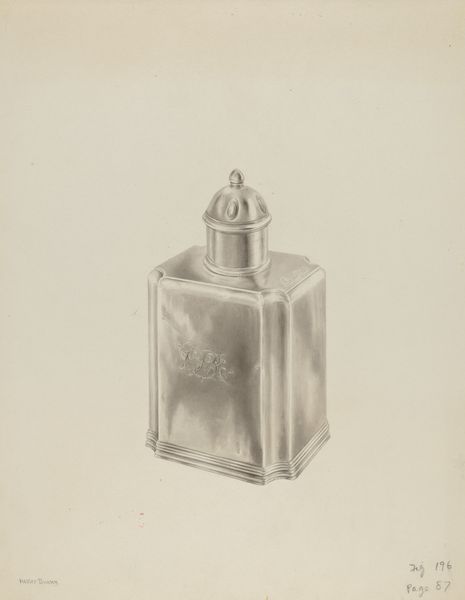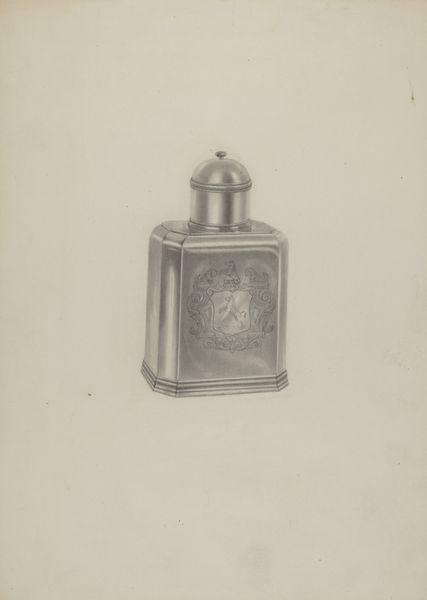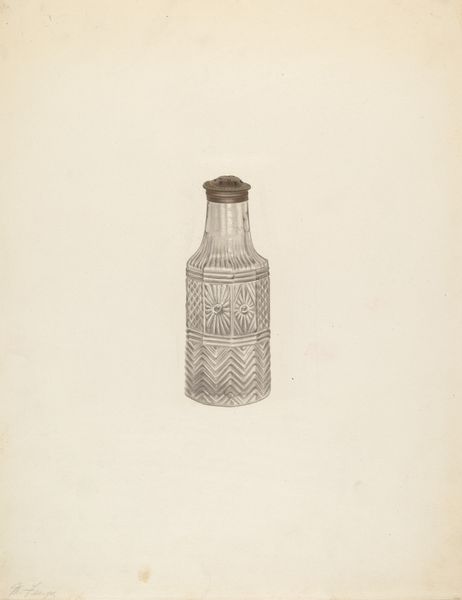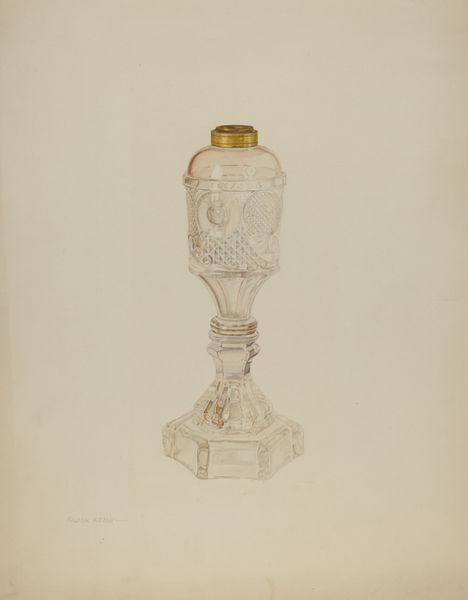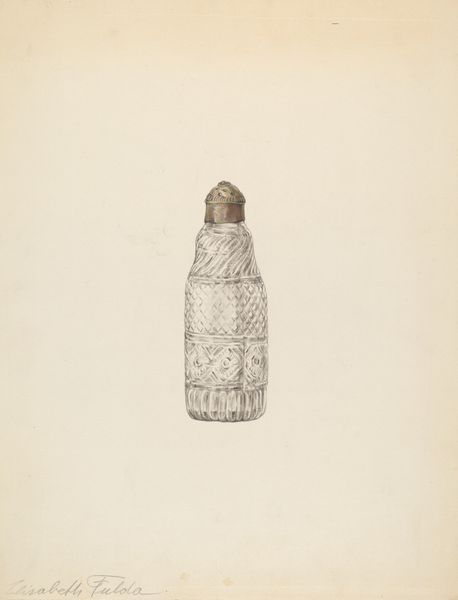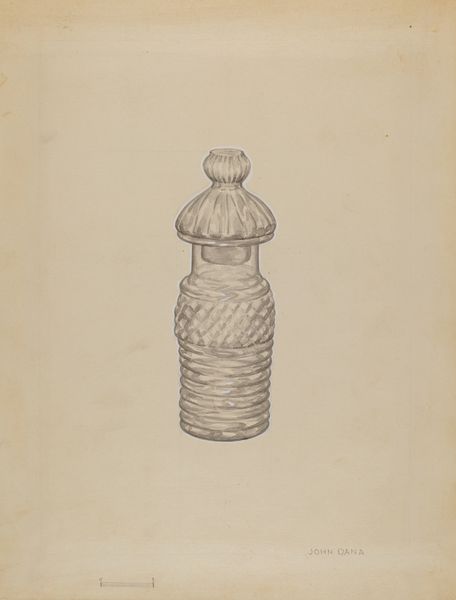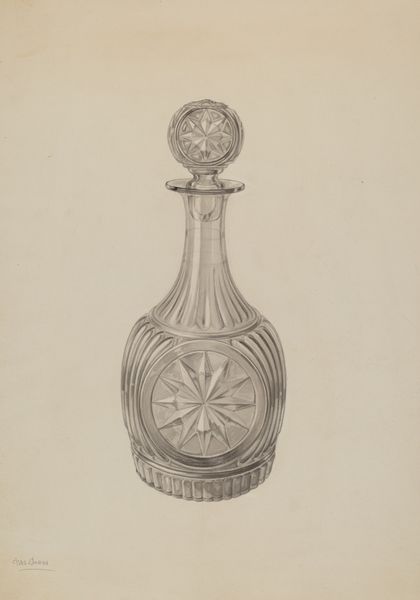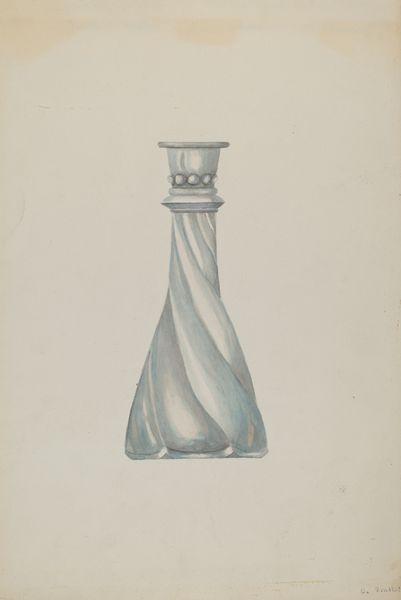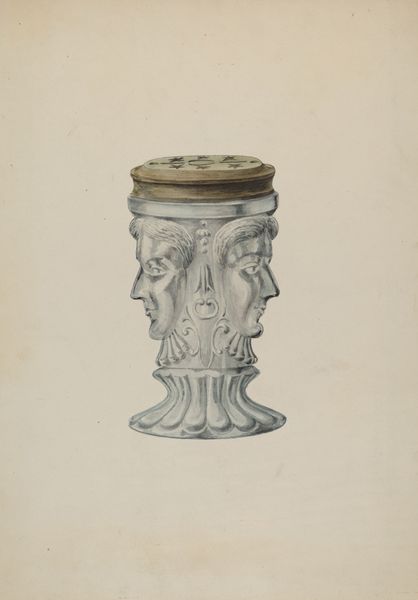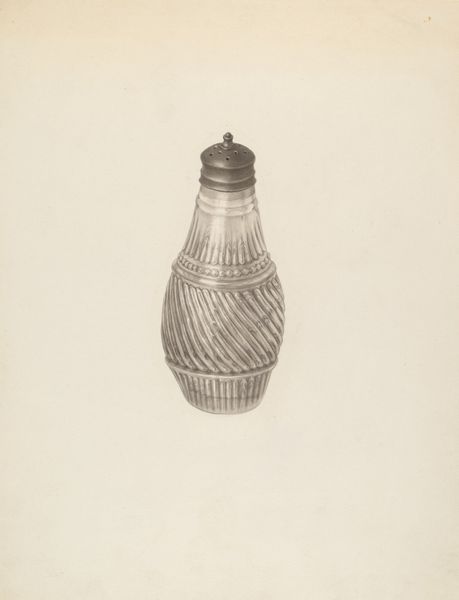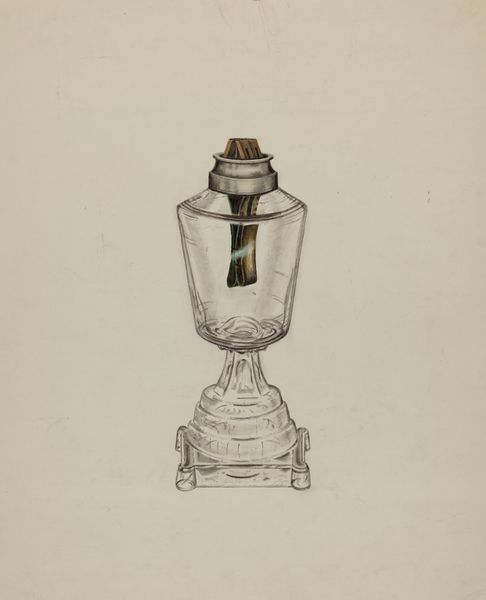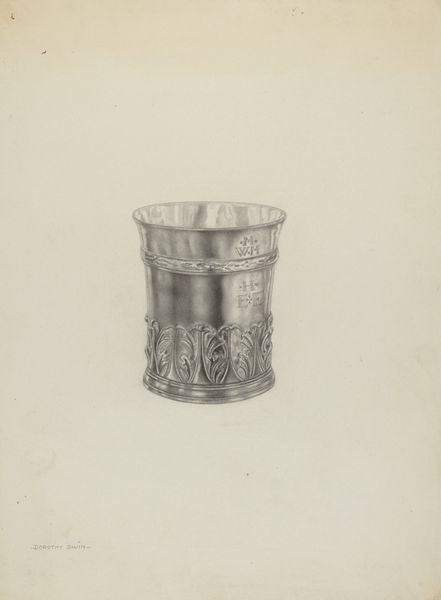
drawing, pencil
#
drawing
#
pencil drawing
#
pencil
#
realism
Dimensions: overall: 29.2 x 22.9 cm (11 1/2 x 9 in.)
Copyright: National Gallery of Art: CC0 1.0
Editor: We're looking at Elisabeth Fulda's "Mustard Pot," a pencil drawing from around 1939. There's a quietness to it, a simplicity... almost like a memory rendered in soft graphite. What catches your eye when you look at this? Curator: It whispers of bygone eras, doesn’t it? I am drawn to the play of light on glass, or the illusion of glass created by the pencil. It's a still life, yet full of implied movement, you can almost hear the clink of a spoon against the jar. Do you see how the artist isolates the object against the blank page, placing it center stage? It becomes a singular meditation. Editor: I hadn't thought about it that way. It seems like the mundaneness of something like a mustard pot is elevated. Is it supposed to be a beautiful object in its own right? Curator: Precisely! The artist invites us to consider the beauty in everyday objects. Look closely – the repetition of those little circles around the glass, like tiny jewels. Does the artist subtly celebrate the design? Or is the artist maybe feeling something more complicated— nostalgia, perhaps, or even the fragility of these ordinary pleasures. What do you think? Editor: That idea of fragility really resonates, especially thinking about it being created on the cusp of the Second World War. There's a stillness, yes, but maybe also a kind of anxious holding onto simpler things. Curator: An astute observation. I am struck by the potential for even a mundane thing such as a mustard pot to act as an emotional time capsule, wouldn't you agree? It is incredible to realize all this feeling coming out of the pencil’s graphite on a simple piece of paper. Editor: Absolutely. I’ll definitely look at still life art differently now. Thanks!
Comments
No comments
Be the first to comment and join the conversation on the ultimate creative platform.
